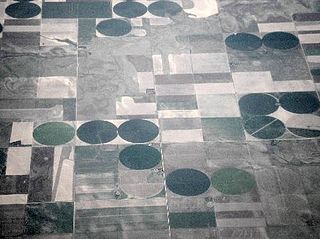
A farm is an area of land that is devoted primarily to agricultural processes with the primary objective of producing food and other crops; it is the basic facility in food production. The name is used for specialized units such as arable farms, vegetable farms, fruit farms, dairy, pig and poultry farms, and land used for the production of natural fiber, biofuel, and other commodities. It includes ranches, feedlots, orchards, plantations and estates, smallholdings, and hobby farms, and includes the farmhouse and agricultural buildings as well as the land. In modern times, the term has been extended so as to include such industrial operations as wind farms and fish farms, both of which can operate on land or at sea.
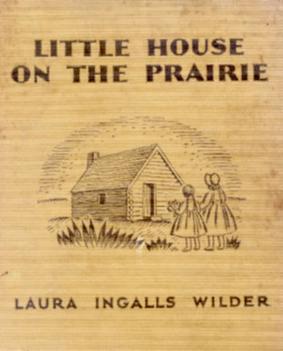
The Little House on the Prairie books comprise a series of American children's novels written by Laura Ingalls Wilder. The stories are based on her childhood and adolescence in the American Midwest between 1870 and 1894. Eight of the novels were completed by Wilder, and published by Harper & Brothers in the 1930s and 1940s, during her lifetime. The name "Little House" appears in the first and third novels in the series, while the third is identically titled Little House on the Prairie. The second novel, meanwhile, was about her husband's childhood.

Conservation agriculture (CA) can be defined by a statement given by the Food and Agriculture Organization of the United Nations as "Conservation Agriculture (CA) is a farming system that can prevent losses of arable land while regenerating degraded lands.It promotes minimum soil disturbance, maintenance of a permanent soil cover, and diversification of plant species. It enhances biodiversity and natural biological processes above and below the ground surface, which contribute to increased water and nutrient use efficiency and to improved and sustained crop production."

Animal husbandry is the branch of agriculture concerned with animals that are raised for meat, fibre, milk, or other products. It includes day-to-day care, management, production, nutrition, selective breeding, and the raising of livestock. Husbandry has a long history, starting with the Neolithic Revolution when animals were first domesticated, from around 13,000 BC onwards, predating farming of the first crops. By the time of early civilisations such as ancient Egypt, cattle, sheep, goats, and pigs were being raised on farms.

A market garden is the relatively small-scale production of fruits, vegetables and flowers as cash crops, frequently sold directly to consumers and restaurants. The diversity of crops grown on a small area of land, typically from under 0.40 hectares to some hectares, or sometimes in greenhouses, distinguishes it from other types of farming. A market garden is sometimes called a truck farm in the USA.
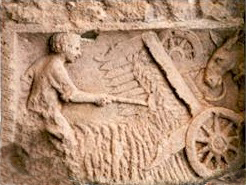
Roman agriculture describes the farming practices of ancient Rome, during a period of over 1000 years. From humble beginnings, the Roman Republic and the Roman Empire expanded to rule much of Europe, northern Africa, and the Middle East and thus comprised many agricultural environments of which the Mediterranean climate of dry, hot summers and cool, rainy winter was the most common. Within the Mediterranean area, a triad of crops were most important: grains, olives, and grapes.
Agricultural extension is the application of scientific research and new knowledge to agricultural practices through farmer education. The field of 'extension' now encompasses a wider range of communication and learning activities organized for rural people by educators from different disciplines, including agriculture, agricultural marketing, health, and business studies.
Shockeysville is an unincorporated community in northern Frederick County, Virginia, United States. It is the northernmost community in the state.

The Taylor–Bray Farm is a farm in Yarmouth Port, Massachusetts, and was originally owned and settled by Richard "of the Rock" Taylor in 1639 while it was still part of Plymouth colony. Stephen Hopkins (settler), a distant maternal line ancestor, was given permission to build a house and cut hay near this farm in 1638, but the first house in Yarmouth built by an Englishman was built by his son Giles in 1638.

Montmartre is a village in the Canadian province of Saskatchewan within the Rural Municipality of Montmartre No. 126 and Census Division No. 6. It is 91 kilometres (57 mi) east of the city of Regina on Highway 48.

Sir Richard Weston (1591–1652) was an English canal builder and agricultural improver. He instigated the construction of the Wey Navigation—one of the first man-made navigations in Britain—and introduced new plants and systems of crop rotation.

George A. Tice is an American photographer. His work depicts a broad range of American life, landscape, and urban environment, mostly photographed in his native New Jersey. He has lived all his life in New Jersey, except for his service in the U.S. Navy, a brief period in California, a fellowship in the United Kingdom, and summer workshops in Maine, where he taught at the Maine Photographic Workshops, now the Maine Media Workshops.

Helen Knothe Nearing was an American author, advocate of simple living and a lifelong vegetarian.

The John Goddard House is a historic house at 235 Goddard Avenue in Brookline, Massachusetts, US. The two-story wood-frame house was originally built by Joseph Goddard in 1670 and re-built by his grandson John Goddard in 1767, a farmer. It is one of the few 18th-century houses in Brookline, important for the role it and its owner played in the American Revolutionary War during the Siege of Boston in 1776. The house was added to the National Register of Historic Places in 1985.
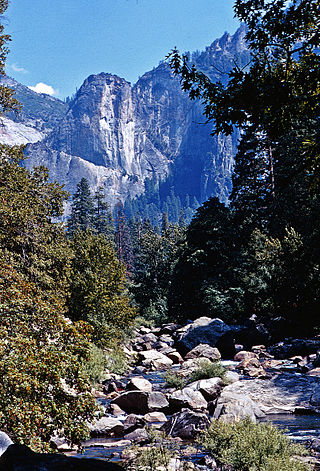
Conservation in the United States can be traced back to the 19th century with the formation of the first National Park. Conservation generally refers to the act of consciously and efficiently using land and/or its natural resources. This can be in the form of setting aside tracts of land for protection from hunting or urban development, or it can take the form of using less resources such as metal, water, or coal. Usually, this process of conservation occurs through or after legislation on local or national levels is passed.

Garretson Forge and Farm is a farm owned by the Garretson Family since 1719. Located in Fair Lawn, Bergen County, New Jersey, United States, it is one of the oldest historic sites in the county. The Peter Garretson House was built in 1720 and was added to the National Register of Historic Places on November 19, 1974.
Chitomborwizi is a farming area in Mashonaland West in Zimbabwe formerly known as Chitomborwizi African Purchase Area. The farms are small to medium sizes. Areas like these were created for black farmers during the colonial era, similar areas are Musengezi near Chegutu, Mushagashe near Chatsworth, Zimbabwe, Wilshere in Chivhu, Matepatepa in Mt Darwin to mention just a few.
Melick's Town Farm is a New Jersey farm in three Hunterdon County towns—Oldwick, Califon, and Bridgewater. The farm, which totals nearly 300 acres, is one of the largest fruit growers in New Jersey. The farm is currently owned by George and Norma Melick, the ninth generation of Melicks. The family has been farming in Hunterdon County since between 1725 and 1735. George Melick says that “all of [his] ancestors in this country were born, baptized, married and buried within five miles of Oldwick.”

Miles Ranch near Dawson, Nebraska was the first of the great ranches established west of the Missouri River. It was established by Stephen Boyd Miles in 1855 as part of “mail grant land” awarded by the United States Government in exchange for transporting mail, freight, and passengers between Independence, Missouri, and Salt Lake City, Utah. Strategically located along the Overland Trail, the Ranch became the headquarters of Miles’ stage line empire. Hundreds of horses and mules were recuperated at the Ranch to service the thriving stage line business. Hemp was the first crop and used to make rope.
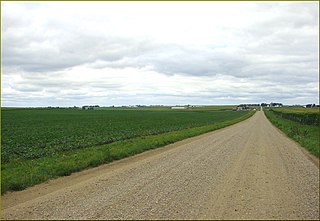
Farmers' suicides in the United States refers to the American farmers taking their own lives, largely since the 1980s, partly due to their falling into debt, but as a larger mental health crisis among U.S. agriculture workers. In the Midwest alone, over 1,500 farmers have taken their own lives since the 1980s. It mirrors a crisis happening globally: in Australia, a farmer dies by suicide every four days; in the United Kingdom, one farmer a week takes their own life, in France it is one every two days. More than 270,000 farmers have died by suicide since 1995 in India.



















